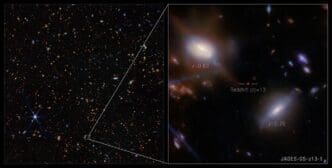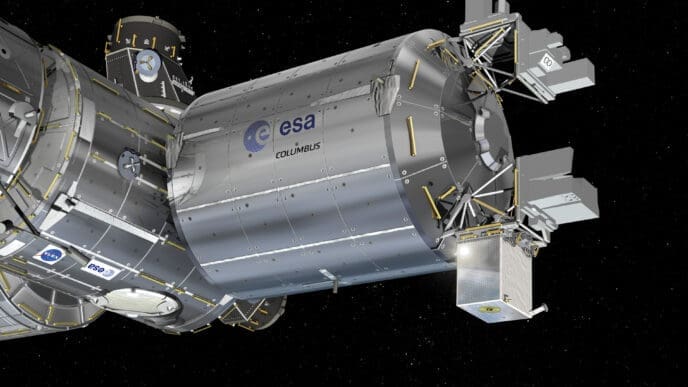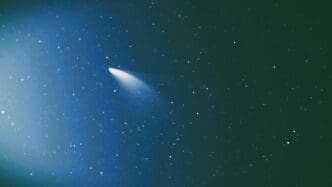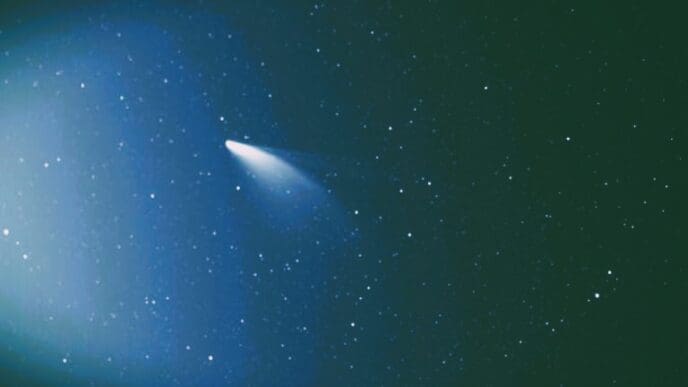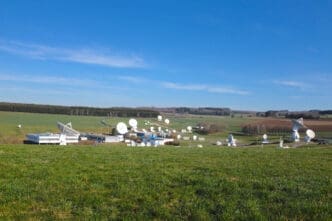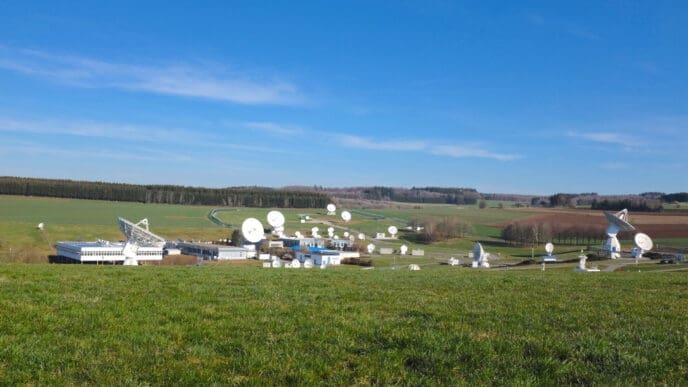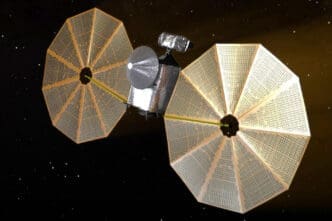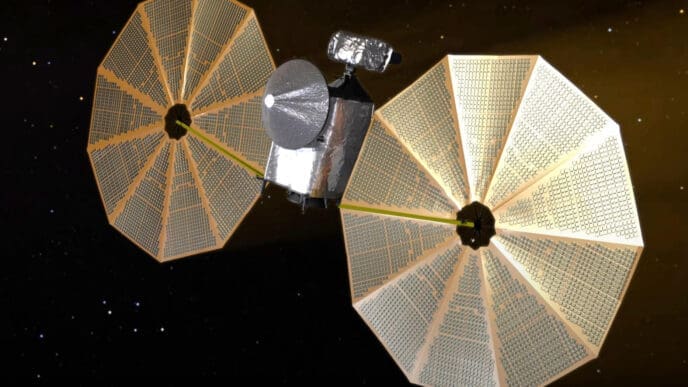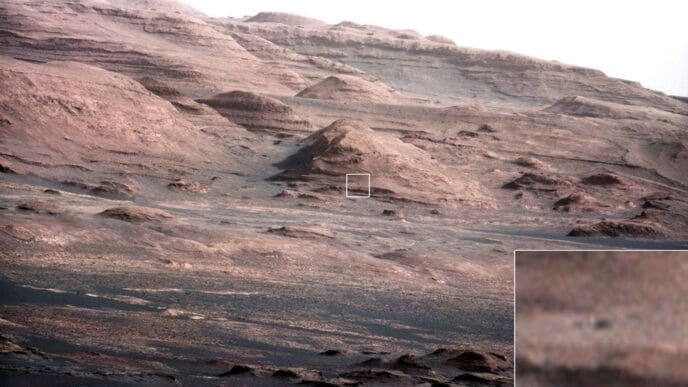The James Webb Space Telescope, renowned for its infrared sensitivity, has unveiled new insights into the early universe. An international team of astronomers harnessed this cutting-edge technology to identify bright hydrogen emissions from a galaxy existing far earlier than previously anticipated. This finding is challenging scientists to unravel how such light managed to penetrate the thick fog of neutral hydrogen that once enveloped the universe.
The discovery centers on the extraordinarily distant galaxy named JADES-GS-z13-1. Detected a mere 330 million years after the big bang, this galaxy was captured in images by the Webb’s Near-Infrared Camera (NIRCam) as part of the James Webb Space Telescope Advanced Deep Extragalactic Survey (JADES). Researchers determined the galaxy’s distance from Earth using its brightness in various infrared filters, estimating its redshift—a measure of how much its light has stretched during its journey through expanding space.
Now, this team of astronomers has identified significant hydrogen emissions from JADES-GS-z13-1 at a surprisingly early point in cosmic history. With a redshift of 13, this galaxy serves as a window into the universe’s infancy. The collaboration includes experts from NASA, ESA, CSA, and universities such as Cambridge and Copenhagen.
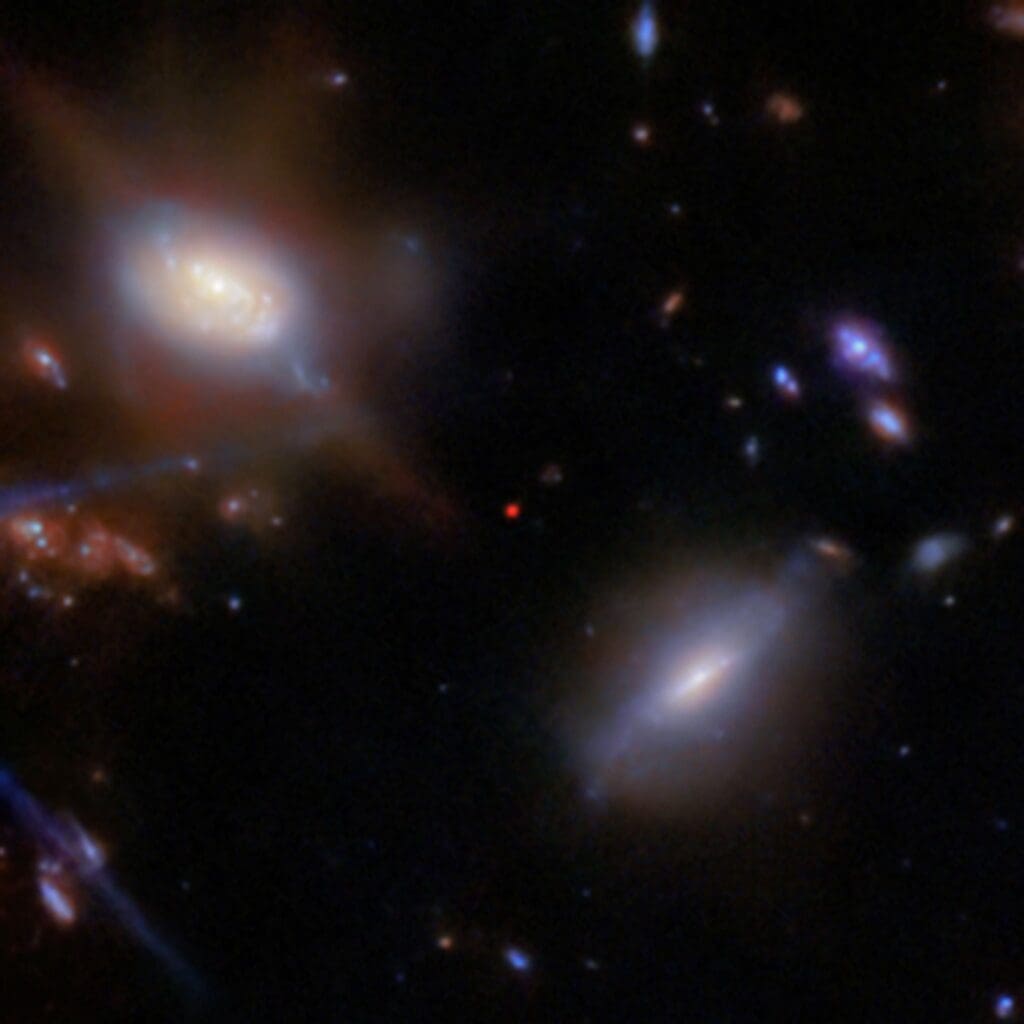
The NIRCam imaging initially suggested a redshift estimate of 12.9. To confirm this extreme redshift, Joris Witstok, leading from the University of Cambridge and the Cosmic Dawn Center in Denmark, leveraged the Webb’s Near-Infrared Spectrograph instrument, verifying a redshift of 13.0. This indicates that the galaxy emerged just 330 million years post-big bang, a minuscule fraction of the universe’s current age of 13.8 billion years. Remarkably, a distinct and bright wavelength of light, known as Lyman-alpha emission, was observed. This hydrogen emission is much stronger than expected, given the youthful age of the universe at that time.
“The early universe was engulfed in a dense fog of neutral hydrogen,” explained Roberto Maiolino from the University of Cambridge and University College London. “Most of this haze was lifted during reionization, completed nearly a billion years after the big bang. GS-z13-1 offers a clear signature of Lyman-alpha emission, revealing an unexpected transparency in the universe at that epoch, catching astronomers off guard.”

Before and during the reionization era, thick clouds of neutral hydrogen shrouded galaxies, preventing ultraviolet light from escaping. This light, including Lyman-alpha emissions, could only escape once stars ionized the hydrogen gas. The confirmed Lyman-alpha emission thus carries profound implications for our understanding of early cosmic history.
Kevin Hainline from the University of Arizona remarked, “Finding a galaxy like this challenges our perception of the early universe, which was thought to be cloaked in a thick fog. Yet, here we observe a beam of light from this galaxy breaking through, with significant implications for understanding reionization.”
The precise origin of the Lyman-alpha radiation remains a mystery. It might emanate from the earliest stars—massive, hot, and luminous—or a powerful active galactic nucleus powered by an early supermassive black hole, as proposed by Witstok. This groundbreaking research was published in the journal Nature.
The James Webb Space Telescope, a collaborative effort involving NASA, ESA, and CSA, continues to be the world’s leading space science observatory. It is dedicated to unraveling the mysteries of our solar system, exploring distant exoplanets, and probing the universe’s enigmatic structures and origins.
The Ripple Effect: How This Discovery Impacts Our Understanding of the Universe
- Public interest in space science and the origins of the universe is likely to grow with such groundbreaking discoveries.
- The identification of Lyman-alpha emission at such an early cosmic stage suggests a reevaluation of galaxy formation theories.
- This discovery could shift scientific perspectives on the timeline of reionization in the universe.
- The unexpected presence of bright hydrogen emissions challenges current models of the early universe’s transparency.
- Understanding these emissions may lead to new insights into the formation of the earliest stars.
- The findings could influence future research directions in cosmology and astrophysics.
- This research highlights the instrumental value of the James Webb Space Telescope in uncovering cosmic mysteries.
- Advancements in technology and observational capabilities continue to redefine our comprehension of the universe’s history.
- The study may inspire collaborative international efforts to further explore cosmic phenomena.
- This breakthrough underlines the importance of investing in space exploration and research.

